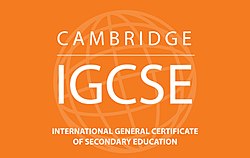
Falling Balls requires skill and is extremely challenging. Physics of gravity, timing and how the ball falls can be challenging. But, if you master the game, you will be rewarded with a high score! And, you can even win trophies by catching the falling balls!
Paper crumpled and fallen balls
While crumpled paper is similar to falling balls, there are important differences. Crumpled paper is smaller than flat paper, and has the same mass. This means that crumpled paper experiences more air resistance when it falls. This slows down the speed of falling objects.
Paper balls also lack a uniform structure, as the folds inside them vary. However, they could also be unique. Researchers haven’t had enough time to examine enough crumpled papers balls to make sure. Researchers can't compare crumpled papers balls with other objects with uniform structures like snowflakes, fingerprints, dust particles, etc.

Physics of Gravity
Gravitational forces from the earth always accelerate falling bodies. A falling ball experiences an acceleration rate of 9.8 m/s2 at a given velocity. This acceleration is known as the acceleration due to gravity. The acceleration due gravity must be multiplied with the initial velocity, u=0, at the time t.
The acceleration caused by gravity can vary depending on topography, subsurface geology, and other factors. However, data from an introductory course in physics can be used to make a simple calculation about the acceleration. An object, usually a ball of metal, is dropped from a predetermined height. It is then recorded how long it fell. The measurements will be exact if they are done correctly.
Timing ball's falls
The mechanics behind the timing and location of falling balls are quite simple. It is the time required for a ball travel to get from its origin to its final position. Multiply the distance traveled by the initial velocity to determine the time it takes for the ball to fall. Divide this number by the time it took to drop. The equation that resulted is s=1/2at2: where s denotes the initial velocity of the ball, and a denotes its acceleration due gravitation.
The first equation is based on a model describing gravitational acceleration. This model can be used to predict the motion of a falling object. We can also predict the time it takes to reach a contact with a target that is moving at a constant velocity. However, in order to accurately predict the object's acceleration, the user must constantly update their sensory information.

Lucky to catch a ball
There have been many instances in history where the chances of catching a fallen baseball varied from one person to another. There have been many attempts to throw baseballs from high buildings such as the Washington Monument, at 555 feet, the Tribune Tower, at 462 feet, or the Terminal Tower, at 680 feet. But, the record hasn't been broken since Joe Sprinz, an ex-baseball player, broke his jaw, and lost some teeth after the ball traveled at 154mph.
FAQ
What amount of money can a teacher earn in early education? (earning potential)
The average salary for a teacher in early childhood is $45,000 per year.
There are however areas where salaries are higher than the average. Teachers in large urban school districts are often paid more than teachers in rural schools.
Salaries are also affected by factors like the size of the district and whether or not a teacher holds a master's degree or doctorate.
Teachers start off making less money than other college graduates simply because they don’t have much experience. Their wages can rise over time though.
What does it mean for a teacher to teach early childhood education?
Early childhood educators must have specialized training. Most states require teaching candidates to get certification from state boards in order to be allowed to teach in public schools.
Some states require that teachers pass exams on reading and math.
Some states require that teachers have completed a minimum number of courses related to early childhood education.
Most states have minimum requirements that teachers must know. These requirements can vary from one state to the next.
How do I select my major?
Students choose their majors depending on their interests. Some students prefer to major in a subject they enjoy doing because they will find this easier than studying something else. Others wish to pursue a career that is not available. Still, others choose a major because they hope to earn money during their studies. Whatever your reasons may be, you should consider what job you might enjoy after graduation.
There are many options for information on different areas of study. Talk to friends or family members about their experiences. You can check newspapers and magazines to see if any jobs are listed. Talk with a guidance counselor at your high school to ask about possible careers. Visit the Career Services section of your local library. Get books on different topics at your local library. Use the Internet to find websites related to particular careers.
Statistics
- These institutions can vary according to different contexts.[83] (en.wikipedia.org)
- They are also 25% more likely to graduate from high school and have higher math and reading scores, with fewer behavioral problems,” according to research at the University of Tennessee. (habitatbroward.org)
- They are more likely to graduate high school (25%) and finish college (116%). (habitatbroward.org)
- Among STEM majors, that number is 83.5 percent. (bostonreview.net)
- Globally, in 2008, around 89% of children aged six to twelve were enrolled in primary education, and this proportion was rising. (en.wikipedia.org)
External Links
How To
What can I do to become a teacher in my area?
Teacher jobs are available at public elementary schools, private elementary school, private middle schools. Public secondary schools, public secondary secondary schools. Private secondary schools. Charter schools. Public and private Catholic schools. Public and private daycare centers.
You must complete a bachelor's program at one of these institutions before you can become a teacher:
-
A four-year university or college
-
A program for associate's degrees
-
Some two-year community college programs
-
A combination of these three types of programs
To be eligible for teacher certification, applicants must satisfy state requirements. These include passing standardized tests and completing a probationary period of work experience.
Many states require applicants to pass the Praxis II test. This test measures knowledge in reading and writing as well math skills.
Many states also require candidates to obtain a specialized license before being certified to teach.
These licenses are issued by the states' boards of education.
Some states grant licenses to applicants without any additional testing. To determine if your state has granted licenses without additional testing, you should contact the board in your state.
Some states do not issue licenses unless the applicant has completed a master's degree program.
In some states, individuals can apply directly to the state education board for licensure.
Licenses vary widely in terms of cost, duration, and required coursework.
One example is that some states only require high school diplomas, while others require bachelor's degrees.
Some states require specific training, such as in literacy and child development.
Some states require candidates have a master's before they can become licensed.
When applying for certification, many states ask prospective teachers about previous employment.
If you worked in another profession, you might want to mention it on your application.
However, the majority of states will accept any previous work experience regardless of what job it was.
You might wish to list the title of your last job, the position you held, and the years of service.
This information can be very helpful for potential employers.
It shows them that your skills and experiences are relevant.
While working, you may have learned new skills and acquired valuable work experience.
This can be displayed on your resume to future employers.